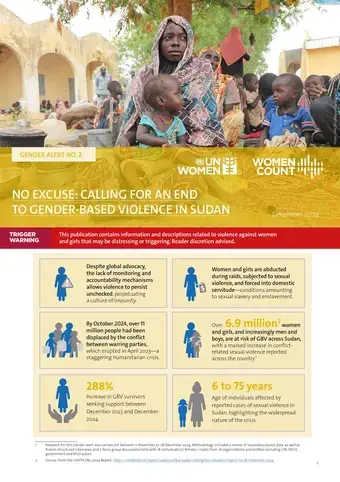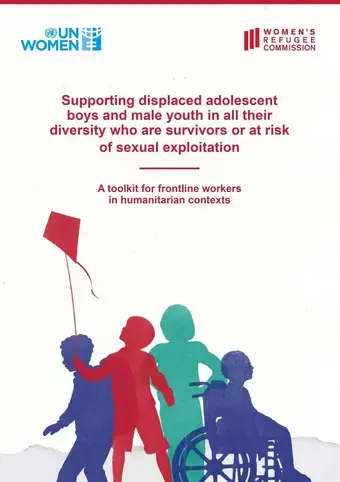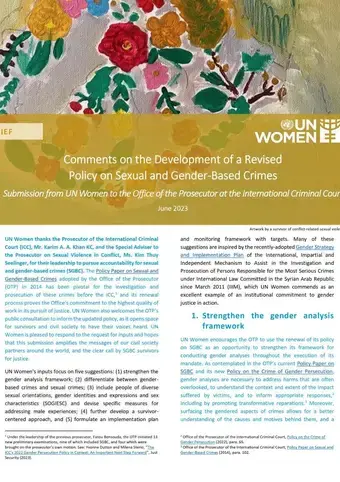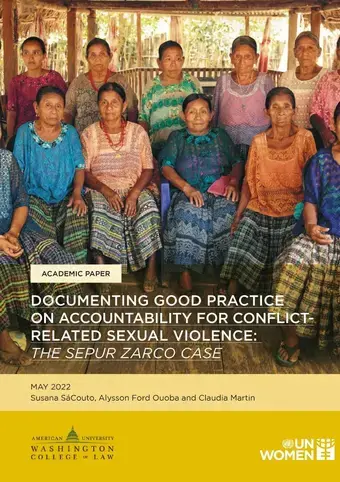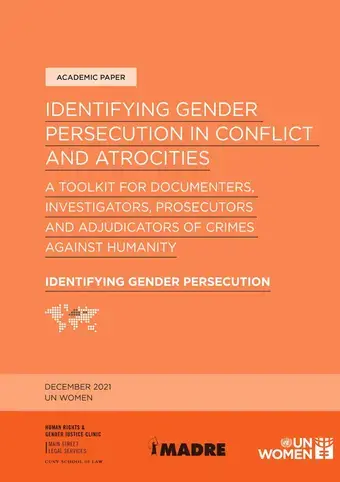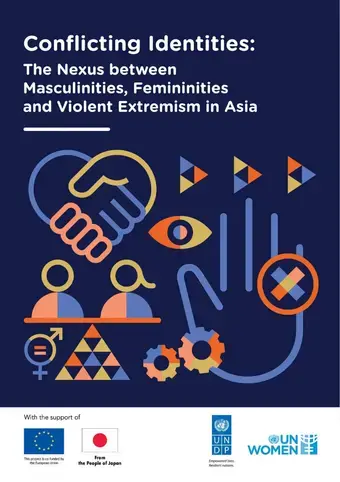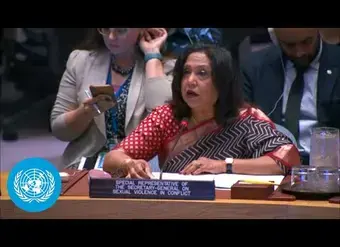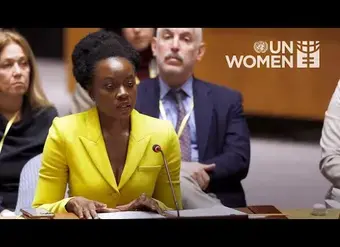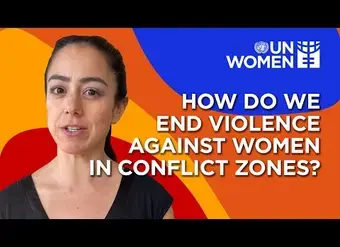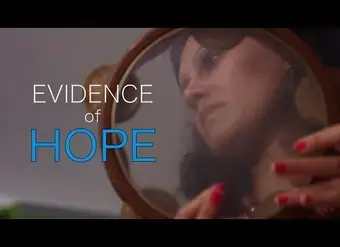Protection and conflict-related sexual violence
Protection is a pillar of the women, peace and security agenda. It entails addressing the specific needs of people affected by violent conflict by taking a survivor-centred approach. This recognizes the different, intersecting vulnerabilities experienced by women, men, girls, boys, and persons of diverse sexual orientations, gender identities, gender expressions, and sex characteristics, based on identity factors including socioeconomic status, ethnicity, nationality, and others.
A survivor-centred approach includes protection from gender-based violence, access to justice and humanitarian assistance, and support for physical and psychological well-being.
One of the most critical protection concerns is conflict-related sexual violence, which is prohibited under international law yet almost always worsens as conflicts intensify. Used as a tactic of war, torture, terrorism, and political repression, by State and non-State actors, conflict-related sexual violence is disproportionately reported as targeting women and girls. The UN Security Council has recognized it as a threat to peace and security and adopted a series of resolutions to prevent and respond effectively to it. The resolutions provide a framework for collective action across the human rights, humanitarian, peacebuilding, and development sectors.
The severity and brutality of conflict-related sexual violence are widely known, chronicled in conflicts around the world. Yet limited reporting—for reasons ranging from a lack of institutional mechanisms to fear and stigma—obscures its scale. For the latest global updates, see the annual reports of the Secretary-General.
Prevention and response are two broad areas of programming. In both, survivor-centred approaches emphasize women’s leadership and meaningful participation at all stages. Strategies may include the following:
- Criminalizing conflict-related sexual violence in domestic legislation in line with international standards, and working with national judicial and security systems to investigate and prosecute crimes.
- Establishing early warning systems based on common social, political, economic, and other indicators that capture risks of conflict-related sexual violence as well as ongoing cases.
- Providing survivors with critical services, such as mental health and psychosocial support, legal aid, economic support and others, and creating safe spaces for survivors to come together.
- Advocating for provisions to prevent and respond to conflict-related sexual violence in ceasefire and peace agreements, and national transitional justice policies.
- Calling for national action plans on women, peace, and security that address conflict-related sexual violence, including its root causes, based on comprehensive, consistent actions, dedicated budgets and regular monitoring.
![The abuelas [grandmothers] of Sepur Zarco. Before the historic judgement was passed on the Sepur Zarco case in 2016, the grandmothers covered their faces to protect their identity as they experienced intense discrimination, and even rejection. Now they are regarded as respected elders and leaders in their community. Photo: UN Women/Ryan Brown.](/sites/default/files/styles/hq_hero_banner_1440/public/2025-10/crsv_sepurzarco_2048x850.jpg.webp?itok=qaCpqQgk)
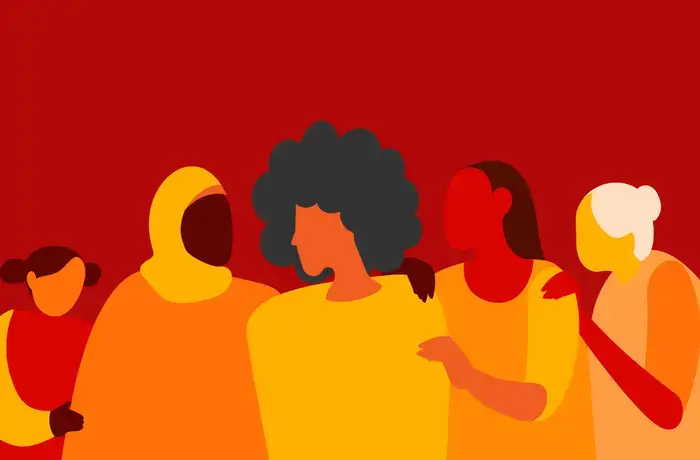

![Women walk arm in arm in IDP [internally displaced persons] Site A, in Bentiu, South Sudan in 2023. Some of the women here have survived sexual violence. In this site, UNFPA, with the support of the CERF Fund, has set up a safe space for them, without men, so that they can recover and set up income-generating activities. Photo: OCHA/Alioune Ndiaye.](/sites/default/files/styles/card_teaser/public/2025-10/crsv_whodoeswhat_southsudan_ocha-ssd_gbv_bentiu-88_1200x800.jpg.webp?itok=gmwT2KWX)

